Virtual Road Trip Part Four: Libraries Flexing their Space
Part Four: Pennsylvania, North Carolina, Alabama and Texas
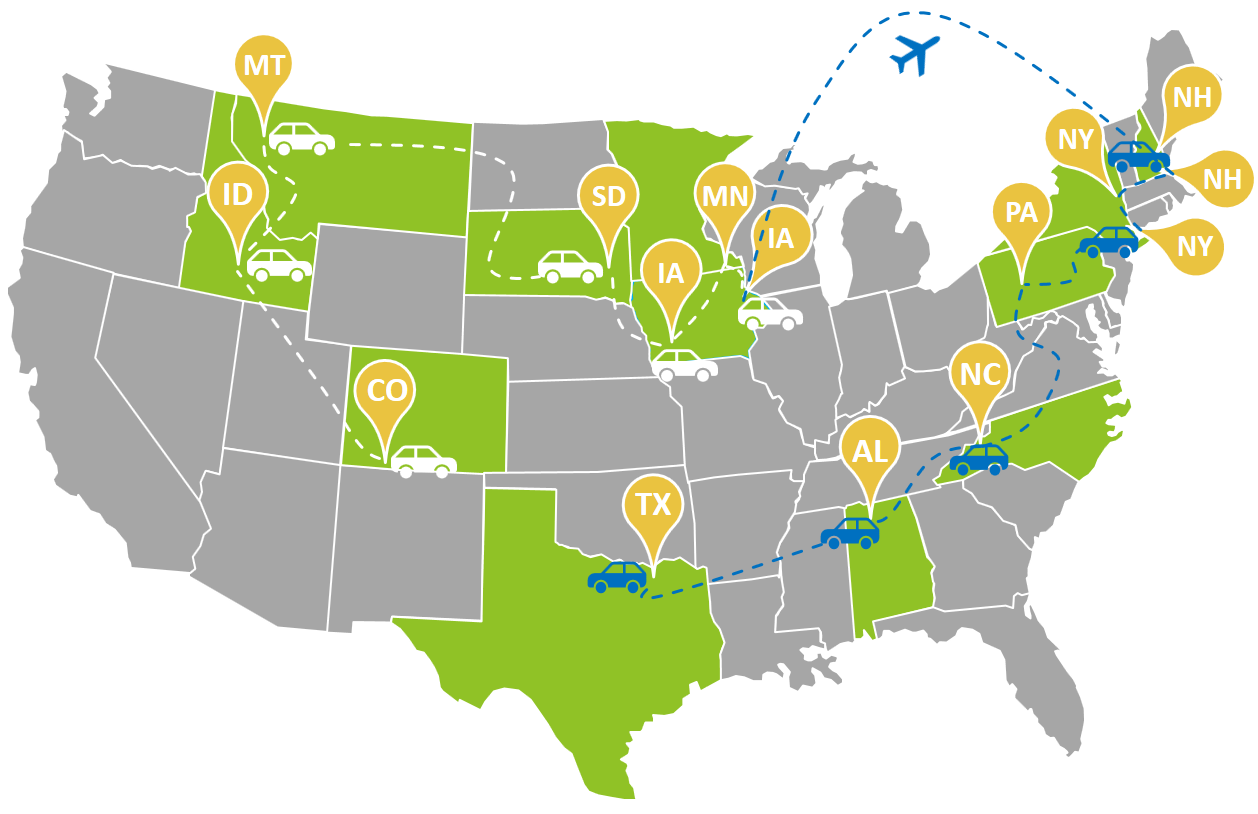 It’s time to hit the road again as we travel the country introducing you to the cohort of 15 small and rural library participants chosen to participate in WebJunction’s Small Libraries Create Smart Spaces project. The cohort has been busy putting their community discovery tools and strategies to work and keeping an eye on potential partners as they prepare to clear and flex their spaces. This is the final leg of our journey before we end our trip back at the WebJunction office in Seattle, Washington. Take another trip, this time down memory lane, and check out Part One, Part Two, and Part Three of the Virtual Road Trip. Leaving New York, it’s time to hop in our trusty rental car and travel east to Pennsylvania.
It’s time to hit the road again as we travel the country introducing you to the cohort of 15 small and rural library participants chosen to participate in WebJunction’s Small Libraries Create Smart Spaces project. The cohort has been busy putting their community discovery tools and strategies to work and keeping an eye on potential partners as they prepare to clear and flex their spaces. This is the final leg of our journey before we end our trip back at the WebJunction office in Seattle, Washington. Take another trip, this time down memory lane, and check out Part One, Part Two, and Part Three of the Virtual Road Trip. Leaving New York, it’s time to hop in our trusty rental car and travel east to Pennsylvania.
Punxsutawney Memorial Library, Punxsutawney, Pennsylvania
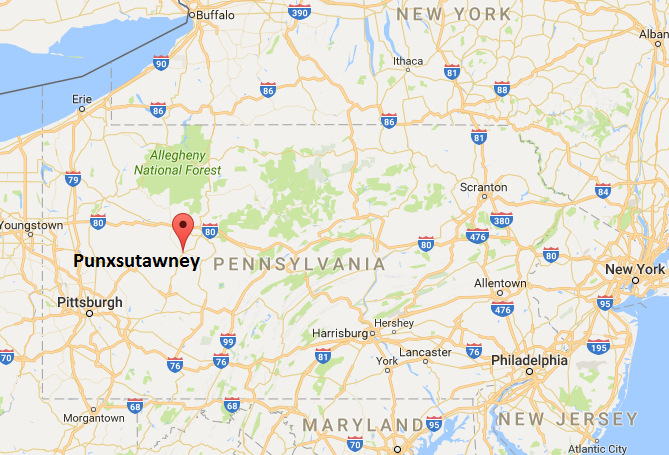 “Will he or won’t he see his shadow?” is the question most asked in Punxsutawney, Pennsylvania. Home to arguably the world’s most famous groundhog, Punxsutawney Phil, the town is nestled in rolling hills of western Pennsylvania, approximately 90 miles northeast of Pittsburgh and 100 miles south of Erie. Originally a Native American campsite halfway between the Allegheny and Susquehanna rivers, Punxsutawney is located on the earliest known trail to the east, the Shamokin path. The area was occupied by Shawnee or Delaware people and, at times, by Seneca or Iroquois. The name Punxsutawney is derived from the Native American word “ponkies” or sand flies, a gnat-like insect that was abundant in the area. The name “town of the ponkies” eventually became Punxsutawney.
“Will he or won’t he see his shadow?” is the question most asked in Punxsutawney, Pennsylvania. Home to arguably the world’s most famous groundhog, Punxsutawney Phil, the town is nestled in rolling hills of western Pennsylvania, approximately 90 miles northeast of Pittsburgh and 100 miles south of Erie. Originally a Native American campsite halfway between the Allegheny and Susquehanna rivers, Punxsutawney is located on the earliest known trail to the east, the Shamokin path. The area was occupied by Shawnee or Delaware people and, at times, by Seneca or Iroquois. The name Punxsutawney is derived from the Native American word “ponkies” or sand flies, a gnat-like insect that was abundant in the area. The name “town of the ponkies” eventually became Punxsutawney.
In 2016, the Punxsutawney Memorial Library celebrated its 100th birthday. Located in Barclay Square, the library not only serves the community’s information needs, but also the needs of tourists looking to get their “Phil fix.” According to Library Director Jessica Lasher, “Thousands of travelers visit annually to see Phil at Gobbler’s Knob, stopping by the library to see his habitat (a warm terrarium built into the Punxsutawney Memorial Library) where he lives the other 364 days of the year.” Passionate about their heritage and traditions, the Punxsutawney area hosts numerous organizations that uphold valuable programs in the community. Says Lasher, “We are fortunate to have active civic clubs who show their support through volunteerism and monetary donations, and our business chamber takes to heart the needs of local business.”
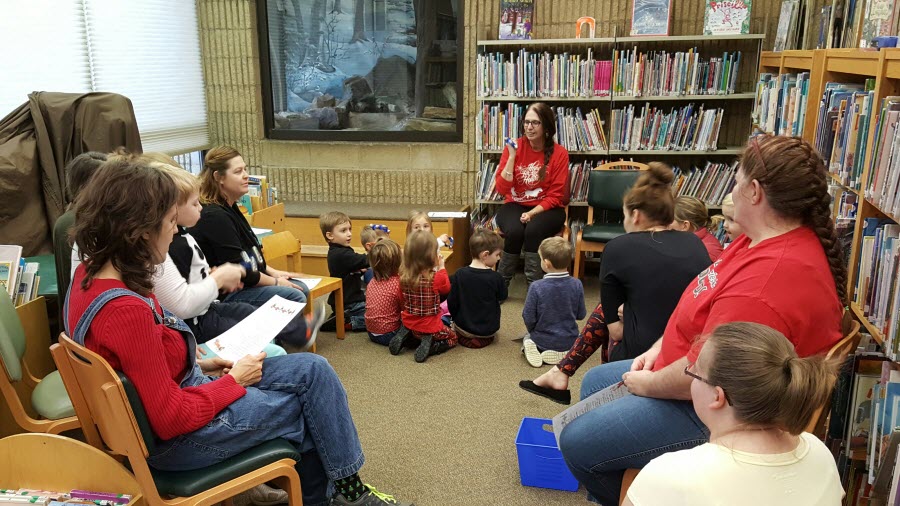 One example of community business collaboration and support is the “Putts Around Punxsy” program put on by the library. “In a rural area such as ours, safe and desirable entertainment is not always available without having to drive 30 minutes to the nearest town,” says Lasher. “Taking into consideration the ‘crawl’ type of events that have been popping up, we started a similar concept using mini-golf.” Miniature golf is not available in Punxsutawney, but Lasher and the library saw it as a “timeless activity for families” and a way to connect to local community groups and businesses. According to Lasher, “We engaged a variety of partners including our local theatre arts guild, weather discovery center, business chamber, fire station, garden club, and groundhog club (the official Punxsutawney Phil club).” Together with these organizations, the library created a 9-hole miniature golf “course” where participants could walk to each location and learn about their services while having fun. Participants start and end their mini-golf crawl at the library, where Lasher and her staff could share what a 21st century public library is about. Lasher says, “We even signed up library patrons while they visited the library because they were excited to see what we had to offer!” The event attracted individuals who did not have library cards, were temporary residents as college students, or were families who had not used library services before. Lasher heard comments such as “I haven’t been to a library in 10 years! It’s so different!”
One example of community business collaboration and support is the “Putts Around Punxsy” program put on by the library. “In a rural area such as ours, safe and desirable entertainment is not always available without having to drive 30 minutes to the nearest town,” says Lasher. “Taking into consideration the ‘crawl’ type of events that have been popping up, we started a similar concept using mini-golf.” Miniature golf is not available in Punxsutawney, but Lasher and the library saw it as a “timeless activity for families” and a way to connect to local community groups and businesses. According to Lasher, “We engaged a variety of partners including our local theatre arts guild, weather discovery center, business chamber, fire station, garden club, and groundhog club (the official Punxsutawney Phil club).” Together with these organizations, the library created a 9-hole miniature golf “course” where participants could walk to each location and learn about their services while having fun. Participants start and end their mini-golf crawl at the library, where Lasher and her staff could share what a 21st century public library is about. Lasher says, “We even signed up library patrons while they visited the library because they were excited to see what we had to offer!” The event attracted individuals who did not have library cards, were temporary residents as college students, or were families who had not used library services before. Lasher heard comments such as “I haven’t been to a library in 10 years! It’s so different!”
Lasher hopes that by participating in the Small Libraries Create Smart Spaces program, she can continue to share that 21st century vision with the Punxsutawney community. “At this time, our community lacks a space that encourages active learning in an informal fashion.” Lasher also notes that having the community’s involvement and communication will be key to navigating the challenges of creating a flexible space. The staff at the Punxsutawney Memorial Library plan to face those challenges with a positive attitude, flexibility and ingenuity, as well as an understanding that “not everything will happen as planned, but knowing that there’s always a way to make it happen.”
Saying goodbye to Punxsutawney and its famous furry weatherman, let’s hit the road and head south to North Carolina. For you outdoor enthusiasts, a good stop along the way is the George Washington and Jefferson National Forest. Here you’ll find abundant recreational activities like camping, hiking, beaches and dunes, bicycling, horseback riding, and nature viewing. Be prepared to see amazing color if you are able to visit during the fall.
Hot Springs Library, Hot Springs, North Carolina
 Madison County, North Carolina, has a population of 21,157 residents spread over 449 square miles of beautiful Appalachian country. To really understand the vastness of Madison County, and the town of Hot Springs in particular, Hot Springs Library Director Melanie Morgan explains, “the average bus ride for public school students is 1.5 hours, and the average distance travelled one way is 23 miles.” The sheer size of the county presents challenges and obstacles for its residents, including lack of accessibility to technology and internet connectivity, and lack of availability of continuing education resources. Madison County Public Libraries provide the only access to the internet for roughly 30% of the county’s population.
Madison County, North Carolina, has a population of 21,157 residents spread over 449 square miles of beautiful Appalachian country. To really understand the vastness of Madison County, and the town of Hot Springs in particular, Hot Springs Library Director Melanie Morgan explains, “the average bus ride for public school students is 1.5 hours, and the average distance travelled one way is 23 miles.” The sheer size of the county presents challenges and obstacles for its residents, including lack of accessibility to technology and internet connectivity, and lack of availability of continuing education resources. Madison County Public Libraries provide the only access to the internet for roughly 30% of the county’s population.
The Hot Springs Library in Hot Springs is one of three libraries that make up the Madison County Public Libraries (MCPL), serving just under 600 of Madison County’s residents. A “resort destination” since the 1800s, the town of Hot Springs has long been renowned for its mineral springs and idyllic mountain setting. Native Americans were the first to discover the 100-plus degree mineral water from which the town received its name; they often held spiritual ceremonies five miles down the road at Paint Rock, where some of North Carolina’s best examples of Native American pictographs can still be seen today. Hot Springs has quirky small-town charm in abundance with residents from all walks of life. Outdoor enthusiasts, artists, small business owners, farmers, retirees and young families call Hot Springs home.
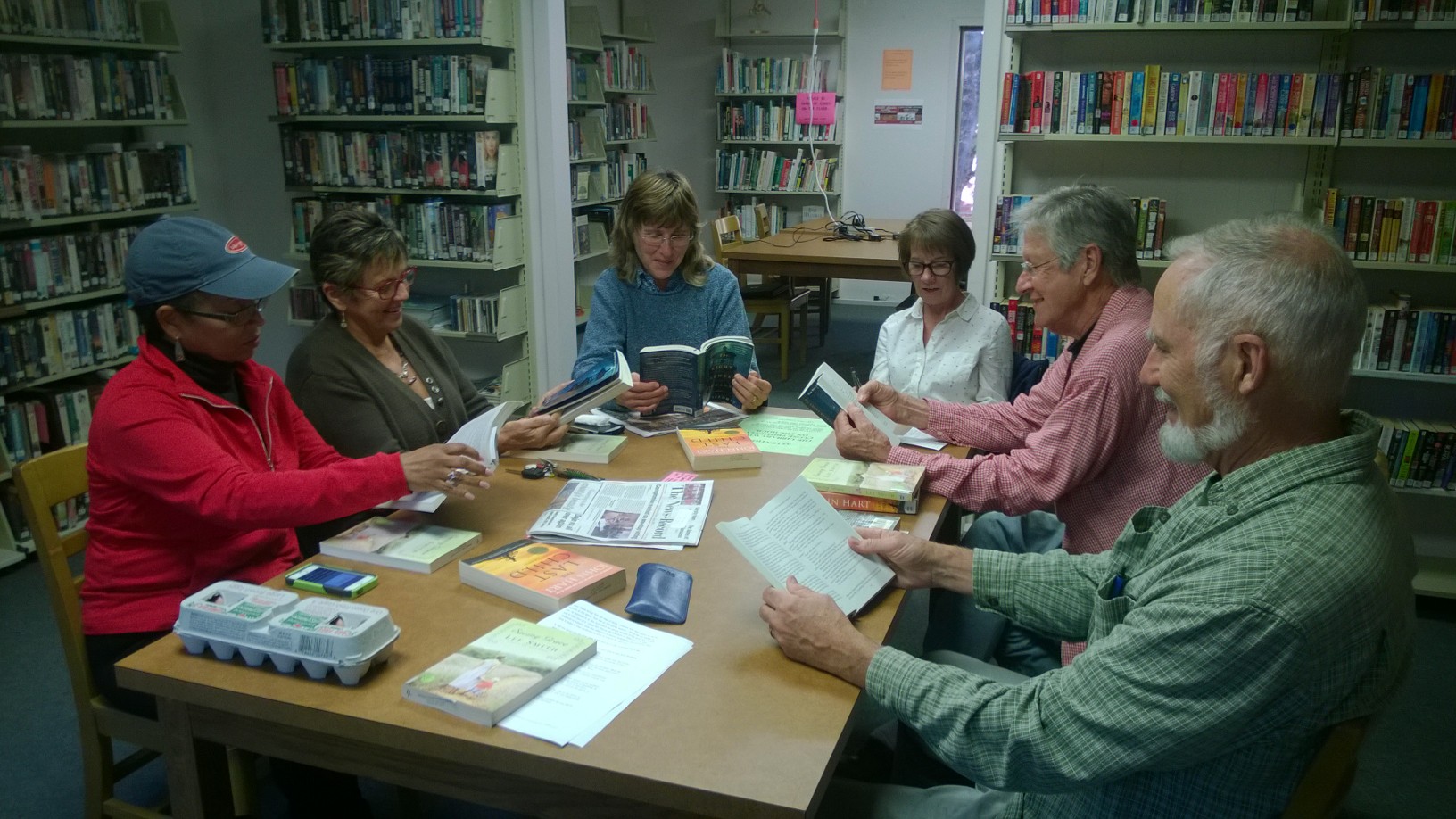 Madison County Public Libraries recently engaged their diverse community in the creation of their 2016-2021 strategic plan. MCPL was able to develop strong community dialog with their stakeholders by gathering input through a variety of methods, including surveys, facilitation work sessions with key community stakeholders, informal conversations with library users and non-library users, and meetings with community partner organizations. Being able to connect with the non-library users was especially important in the process. According to Morgan, they were able to connect with potential patrons by having informal conversations with them at the library’s booth at the Madison County Fair. In addition, electronic surveys were sent to the Madison County School System and Madison County Government employees, and paper surveys were also placed at the Health Department, Department of Social Services and local food banks to “gain input from those who may not use the library.” This process has led to the creation of a well-thought out and relevant strategic plan for MCPL.
Madison County Public Libraries recently engaged their diverse community in the creation of their 2016-2021 strategic plan. MCPL was able to develop strong community dialog with their stakeholders by gathering input through a variety of methods, including surveys, facilitation work sessions with key community stakeholders, informal conversations with library users and non-library users, and meetings with community partner organizations. Being able to connect with the non-library users was especially important in the process. According to Morgan, they were able to connect with potential patrons by having informal conversations with them at the library’s booth at the Madison County Fair. In addition, electronic surveys were sent to the Madison County School System and Madison County Government employees, and paper surveys were also placed at the Health Department, Department of Social Services and local food banks to “gain input from those who may not use the library.” This process has led to the creation of a well-thought out and relevant strategic plan for MCPL.
With the adoption of the new strategic plan, participation in Small Libraries Create Smart Spaces could not be coming at a better time for the Hot Springs Library. The library has recently seen a two-year project come to fruition with the purchase of a permanent library location. The location is not without its limitations. According to Morgan “the space was not created to be a library, but rather a storefront,” which means that creating a space that functions well as a library can be challenging. Despite the confines of the space, Morgan and her staff “seek to think outside the box.” We are excited to see what they come up with for their community.
Driving east on Interstate 40, we’ll head west through Tennessee as we travel to our next destination library in Alabama. There are many interesting stops in Tennessee, including the city of Chattanooga, which is a great stop for American History buffs. During the Civil War, Chattanooga was a major prize to be had by both sides due to its railroad and location just north of the of the Georgia border. There are several Civil War sites you can visit. Plan your trip by visiting the Civil War Traveler, where you will find road maps and facts about the various sites.
Town Creek Public Library, Town Creek, Alabama
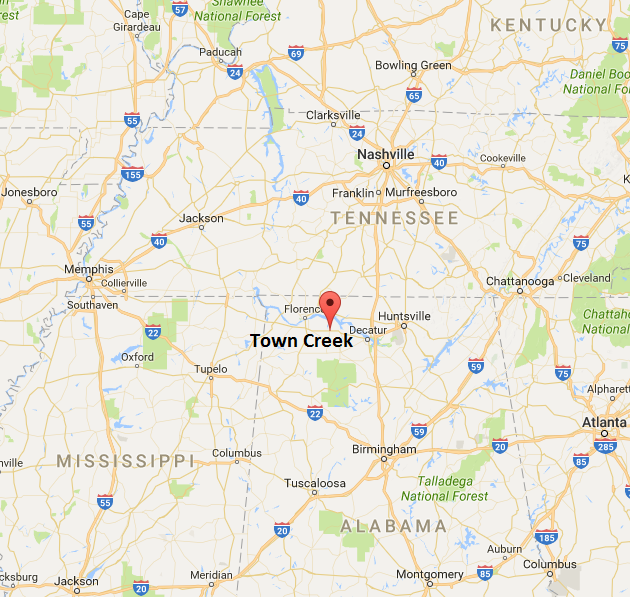 Home to just under 1,100 residents, Town Creek, Alabama, is located in northwest Lawrence County. Incorporated in 1875, Town Creek is the second largest town in the county. Even with its small population, Town Creek has been home to many notable figures. Several former and current National Football League players have called Town Creek home, including Chris Goode, Kerry Goode, Don Jones, Antonio Langham, Kalvin Pearson and Bob Penchion. Ali-Ollie Woodson, former member of the band The Temptations, was born in Detroit, but grew up in Town Creek. Rilous Carter, the Vice President of Disney’s Epcot, was also born and raised in Town Creek.
Home to just under 1,100 residents, Town Creek, Alabama, is located in northwest Lawrence County. Incorporated in 1875, Town Creek is the second largest town in the county. Even with its small population, Town Creek has been home to many notable figures. Several former and current National Football League players have called Town Creek home, including Chris Goode, Kerry Goode, Don Jones, Antonio Langham, Kalvin Pearson and Bob Penchion. Ali-Ollie Woodson, former member of the band The Temptations, was born in Detroit, but grew up in Town Creek. Rilous Carter, the Vice President of Disney’s Epcot, was also born and raised in Town Creek.
In the middle of this small town with big names sits the Town Creek Public Library. Led by Director Sharon Green, staff at the library regularly showcase their prominent alumni by spotlighting their careers and displaying their biographies. According to Green, they “continuously remind our youth that their small town is not known for limitations but a tradition of success.” She says, “To personify that these same notable, successful, outstanding people once sat in the very same classroom, walked the very same halls and came from the same small town, we hope to inspire each child that through education, dedication and determination, their futures cannot be limited.”
While the youth in Town Creek are certainly the future, the Town Creek Public Library has also created notable programs for the senior residents in town. When the need arose for community fruit baskets for the elderly and home-bound, the library jumped into action. They were able to partner with the local Wal-Mart store in order to secure a discount on fruit and ensure that the quality was high. Weekly community meetings open to the public helped plan the program and many volunteers have since become patrons of the library, eager to volunteer for other events.
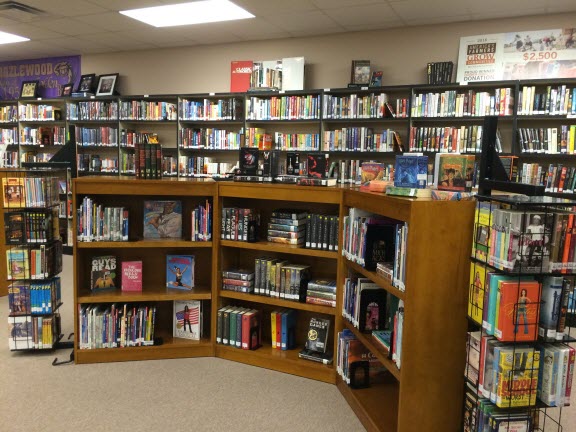 By participating in the Small Libraries Create Smart Spaces project, Green hopes to serve all members of the community. “Every day needs to offer encouragement and motivation for successful futures.” With their community’s commitment and dedication, we are sure that they will accomplish their goal.
By participating in the Small Libraries Create Smart Spaces project, Green hopes to serve all members of the community. “Every day needs to offer encouragement and motivation for successful futures.” With their community’s commitment and dedication, we are sure that they will accomplish their goal.
As we leave Alabama, we’ll stay on Interstate 40 back through Tennessee on our way to Texas. We have seen some incredible historical and literary pit stops on this road trip, but this time we are going to take a musical detour to the vibrant city of Memphis, Tennessee. The first notable stop in Memphis is Beale Street, “Home of the Blues.” Beale Street has a rich history that started in the roaring 20’s. Machine Gun Kelly, noted American gangster, even peddled whiskey out of a clothes basket on Beale Street before he climbed the ranks of big-time crime. Today, Beale Street is alive with a variety of restaurants and music. Concert series, hot rods and bike races are just some of the events happening today.
We cannot leave Memphis without visiting its biggest musical attraction. The Graceland mansion sits on a 13.8-acre estate that was owned by American musician Elvis Presley. Regarded as one of the most significant cultural icons of the 20th century, he was often referred to as “The King of Rock and Roll,” or simply “The King.” Graceland has served as a destination for Elvis enthusiasts and has been open to the public as a museum since 1982. Graceland is the second most-visited house in America, second to The White House.
Bertha Voyer Memorial Library, Honey Grove, Texas
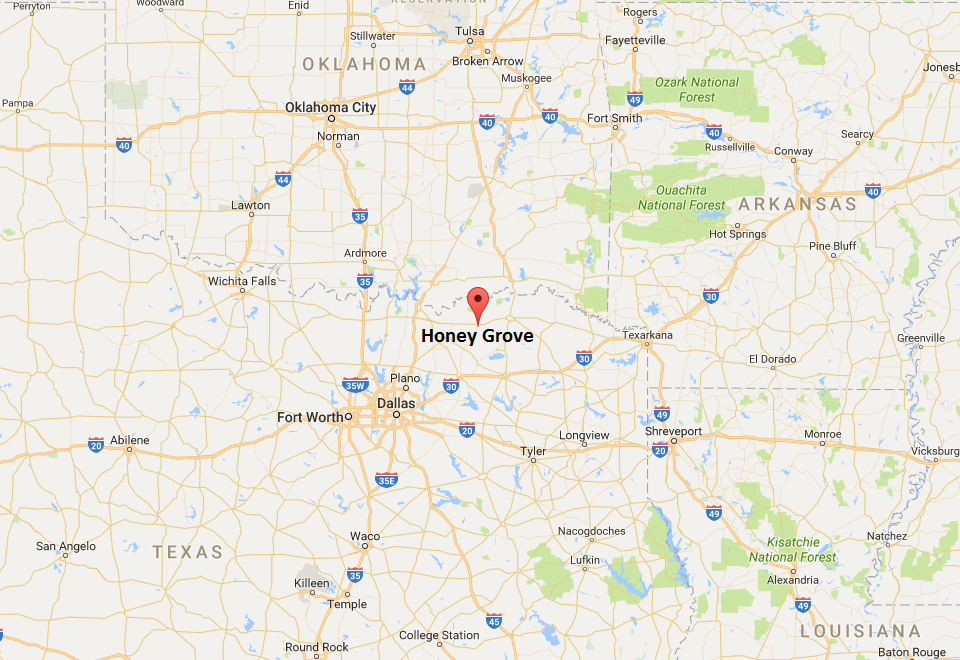 Honey Grove, Texas, is located on state highway 56 between Bonham and Paris, approximately 85 miles north of Dallas. Called “The Sweetest Town in Texas,” Honey Grove was so named after Davey Crockett camped there on his way to join the Texas Army at San Antonio in 1836. In letters he wrote to Tennessee, he described the area as the “honey grove,” due to its abundance of honey in the hollow trees. Crockett, along with Samuel Erwin, was instrumental in founding the town of Honey Grove. It is said that Crockett had even planned on settling in Honey Grove himself, had he not been killed at the battle at the Alamo. Instead, Erwin, Crockett’s close friend, was the first settler in Honey Grove in 1837, with the town officially established in 1873.
Honey Grove, Texas, is located on state highway 56 between Bonham and Paris, approximately 85 miles north of Dallas. Called “The Sweetest Town in Texas,” Honey Grove was so named after Davey Crockett camped there on his way to join the Texas Army at San Antonio in 1836. In letters he wrote to Tennessee, he described the area as the “honey grove,” due to its abundance of honey in the hollow trees. Crockett, along with Samuel Erwin, was instrumental in founding the town of Honey Grove. It is said that Crockett had even planned on settling in Honey Grove himself, had he not been killed at the battle at the Alamo. Instead, Erwin, Crockett’s close friend, was the first settler in Honey Grove in 1837, with the town officially established in 1873.
Located on the corner of East Main Street and 6th Street is the Bertha Voyer Memorial Library (BVML). The library was started in 1962 by Bertha Voyer, wife of Richard R. Voyer, who was president of the David Graham Hall Foundation, a private non-profit organization now known as the Hall-Voyer Foundation. Known as the “Library Lady,” Bertha Voyer was loved by the library patrons who gravitated to her sweet and gentle nature. Originally named the Honey Grove Public Library, it was renamed to the Bertha Voyer Memorial Library after her death in 1985.
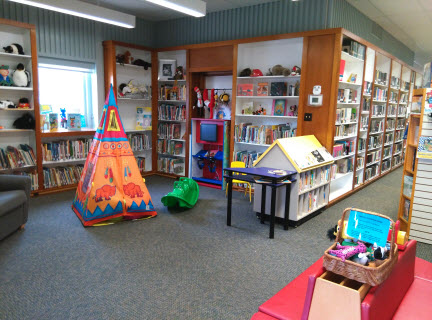 Mrs. Voyer would marvel at the library if she could see it today. Active summer reading and story time programs, Science Action Club for children and Basic Ed, GED and ESL classes are just some of the programs that BVML offers the Honey Grove community. In 2012, the library received a PEARL Grant that allowed them to initiate a program of their choosing. “Unsure of what our patrons most needed or wanted, we decided to simply ask them,” says BVML Director Pattie Mayfield. “We placed surveys on our circulation desk, website, sent email and newsletters. We held ’town hall‘ type meetings – inviting patrons through the same outlets as well as newspapers, flyers, etc.” The library received great answers to their questions; however, they soon realized they were only getting one side of the story. “We were only hearing from our patrons,” Says Mayfield, “those that we were already serving and thought we were doing everything they needed.” To reach those non-users, Mayfield enlisted the help of the library’s Teen Board and offered them a small stipend to stand outside the local Dollar General store and high school football games. According to Mayfield, they chose these spots because they are “the only places in our community to find large groups of people.” The teens asked people why they didn’t use the library, what their opinion of the library was and what the library could do to prompt a visit. The strategy paid off. Teens brought in over 200 surveys with eye-opening results. They discovered that there was a real need for continuing education classes, specifically GED preparation. The library started offering GED Prep classes once a week, which quickly expanded to two nights and then two mornings per week. They added ESL classes to fill another clear need in the community, now held four times a week, and an Adult Basic Ed class for those who needed basic help not addressed by the GED. “These programs continue today,” says Mayfield. To date, these courses have helped over 40 people attain their GEDs, “thus improving their ability to find better jobs and enter higher education.”
Mrs. Voyer would marvel at the library if she could see it today. Active summer reading and story time programs, Science Action Club for children and Basic Ed, GED and ESL classes are just some of the programs that BVML offers the Honey Grove community. In 2012, the library received a PEARL Grant that allowed them to initiate a program of their choosing. “Unsure of what our patrons most needed or wanted, we decided to simply ask them,” says BVML Director Pattie Mayfield. “We placed surveys on our circulation desk, website, sent email and newsletters. We held ’town hall‘ type meetings – inviting patrons through the same outlets as well as newspapers, flyers, etc.” The library received great answers to their questions; however, they soon realized they were only getting one side of the story. “We were only hearing from our patrons,” Says Mayfield, “those that we were already serving and thought we were doing everything they needed.” To reach those non-users, Mayfield enlisted the help of the library’s Teen Board and offered them a small stipend to stand outside the local Dollar General store and high school football games. According to Mayfield, they chose these spots because they are “the only places in our community to find large groups of people.” The teens asked people why they didn’t use the library, what their opinion of the library was and what the library could do to prompt a visit. The strategy paid off. Teens brought in over 200 surveys with eye-opening results. They discovered that there was a real need for continuing education classes, specifically GED preparation. The library started offering GED Prep classes once a week, which quickly expanded to two nights and then two mornings per week. They added ESL classes to fill another clear need in the community, now held four times a week, and an Adult Basic Ed class for those who needed basic help not addressed by the GED. “These programs continue today,” says Mayfield. To date, these courses have helped over 40 people attain their GEDs, “thus improving their ability to find better jobs and enter higher education.”
The BVML is about to max out their current space, which is actually four pre-1900 buildings connected by fire walls between them. They hope that by participating in the Small Libraries Create Smart Spaces project, they will learn ways to maximize the space they have and utilize the space that has been previously underutilized. Mayfield is particularly excited about “bringing the community together to brainstorm and find new ways around the challenges.” The project team is looking forward to seeing what this small but powerful library can do with their determination, collaboration and imagination.
Our journey across the country visiting the 15 incredible small and rural libraries has come to an end. We have seen some beautiful parts of our country and discovered some amazing small but mighty libraries. Small towns are the backbone of America. Their libraries are often the heart of those towns and they are constantly coming up with creative ways to meet their community’s needs. We hope you have enjoyed the trip as much as we have. Please check back over the next several months to see the updates from the project.
Small Libraries Create Smart Spaces
Fifteen small U.S. public libraries were selected to participate in the Small Libraries Create Smart Spaces project. The selected libraries are:
Caledonia Public Library, Caledonia, Minnesota
Cornwall Public Library, Cornwall, New York
Glenns Ferry Public Library, Glenns Ferry, Idaho
Greenwich Free Library, Greenwich, New York
Honey Grove Library & Learning Center, Honey Grove, Texas
Hot Springs Library, Hot Springs, North Carolina
Ignacio Community Library, Ignacio, Colorado
James Kennedy Public Library, Dyersville, Iowa
Madison Public Library, Madison, South Dakota
Norelius Community Library, Denison, Iowa
Punxsutawney Memorial Library, Punxsutawney, Pennsylvania
Ronan Library District, Ronan, Montana
Town Creek Public Library, Town Creek, Alabama
Tucker Free Library, Henniker, New Hampshire
Wilton Public and Gregg Free Library, Wilton, New Hampshire
This two-year project is made possible by a National Leadership Grant from the Institute of Museum and Library Services and is implemented in partnership by WebJunction and the Association for Rural and Small Libraries.
